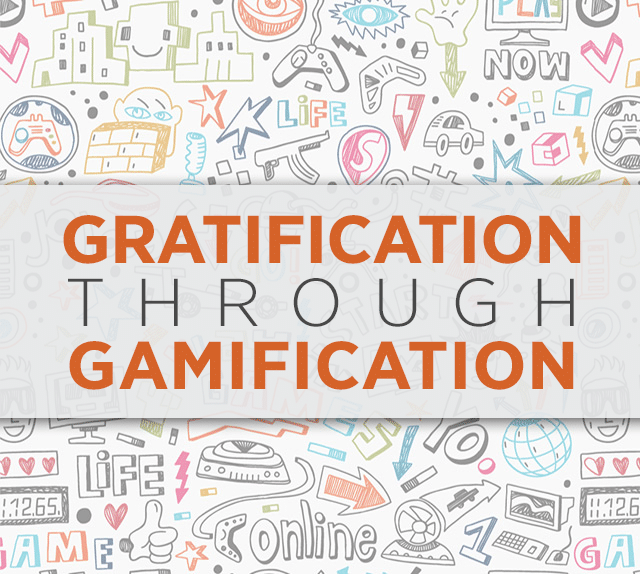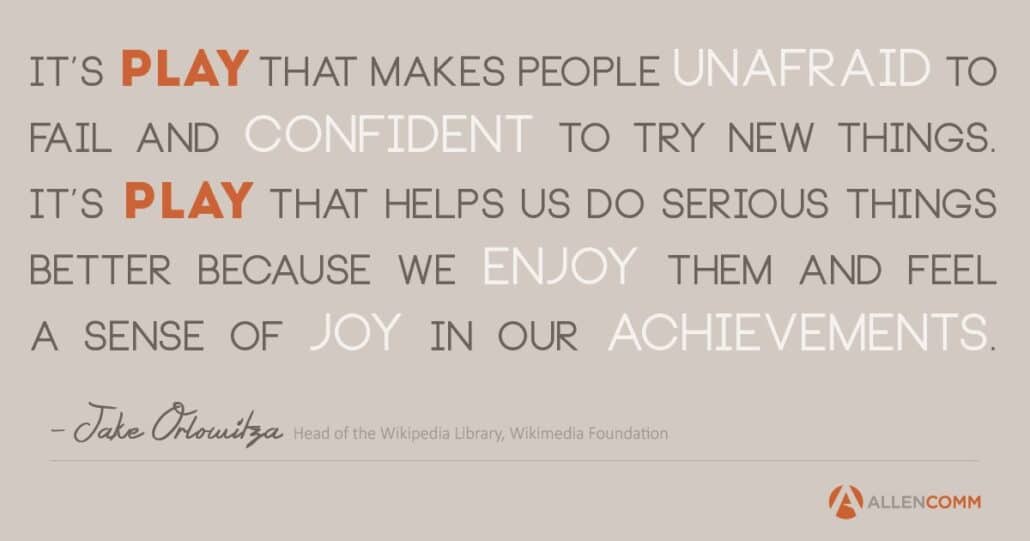Creating Instant Gratification through Gamification
 Last month a record breaking 114 million Americans watched the Super Bowl, a game touted as one of the most exciting in history. The drama came in part from the juxtaposition between the teams’ handling of the ball: Tom Brady set a record with 37 completions while the Seahawks completed one-third that many. And the Seahawks likely lost the game after a throw from the one-yard line was intercepted in the end zone.
Last month a record breaking 114 million Americans watched the Super Bowl, a game touted as one of the most exciting in history. The drama came in part from the juxtaposition between the teams’ handling of the ball: Tom Brady set a record with 37 completions while the Seahawks completed one-third that many. And the Seahawks likely lost the game after a throw from the one-yard line was intercepted in the end zone.
With all the excitement forward passes add to football, does it surprise you that in the early days of American football throws were against the rules? It could be kicked or batted, but never carried or thrown. But as America entered the 20th century, its citizens looked skyward, obsessed with technological innovation and futuristic inventions. Inspired by invention fever, the forward pass entered football in 1906 and the game morphed into what we love today. As we innovate to create better, more effective training, we too need to understand elearning and how advancements in training technology affect our learners and their motivations.
For the past few years gamification has been the buzzword of the industry and for good reason. In a recent worldwide survey, Americans were the mostly likely to say they were risk-takers and liked competition, much more so than respondents in Europe and Asia. With an affinity for competition, types of training that include gamification elements like badges, progress bars, achievement awards and leaderboards feed directly into learners’ motivations and increase their engagement. And because learners have shorter attention spans in an increasingly media-rich world (again, changes in technology), gamification can give learners the instant gratification they crave through real-time feedback loops. This feedback shows learners their progress not only against their own previous attempts, but also how they compare to co-workers. And because most of us value competition, learners engage more frequently and with greater enthusiasm as they strive to be the best.
Because gamification plays so perfectly into personal motivations, it has quickly begun permeating the business world. Marketing departments are increasingly reliant on gamification to increase consumers’ commenting, social media engagement and product reviews. According to a Gigya study of a billion users, gamification can boost engagement by almost a third, including growing content discovery by 68%.
 We at Allen have seen similar, just as remarkable statistics for engagement from gamification and elearning in training. We recently completed a new brand training course for a Fortune 100 company. Our challenge: deliver critical brand information to a voluntary audience of 300,000 employees worldwide—and inspire them to take it. The highest number of completions for a course previously targeted to this audience was 12,000, but our carefully designed solution incorporating gamification resulted in more than 220,000 completions! With so many users now engaged with stimulating, challenging content, learner attitudes towards training began to shift away from viewing it as boring or time-consuming, to valuable, relevant and fun.
We at Allen have seen similar, just as remarkable statistics for engagement from gamification and elearning in training. We recently completed a new brand training course for a Fortune 100 company. Our challenge: deliver critical brand information to a voluntary audience of 300,000 employees worldwide—and inspire them to take it. The highest number of completions for a course previously targeted to this audience was 12,000, but our carefully designed solution incorporating gamification resulted in more than 220,000 completions! With so many users now engaged with stimulating, challenging content, learner attitudes towards training began to shift away from viewing it as boring or time-consuming, to valuable, relevant and fun.
To capitalize on new attitudes and openness, Allen was able to further push recommended content through our custom portal to learners, similar to how Amazon.com suggests new products. This strategy allows learners to self-direct their pathway and take personal accountability for accessing and completing training. To encourage brand engagement and ownership, learners were assigned a “Brand Impact” score clearly visible as a gauge displayed on the portal home screen and throughout training courses. For every course and activity completed, their score increases highlighting the value training has for them and the company.
Presenting training as a discovery process supported by gamification, rather than a predetermined “must-do” keeps learners interested in exploring and engaging. And employee engagement adds significant value to any business model. Best Buy, for example, estimates every 0.1% increase in engagement translates to an additional $100,000 in operating income at any given store.
As technology continues to advance, our learners’ motivations and interests will shift. Gamification is a flexible and adaptive technique we can use to meet learners through their motivations. By understanding their instinctive competitive nature, we can design solutions that inspire and engage our audience.
Ready to take gamification to the next level? Talk to one of our experts.





